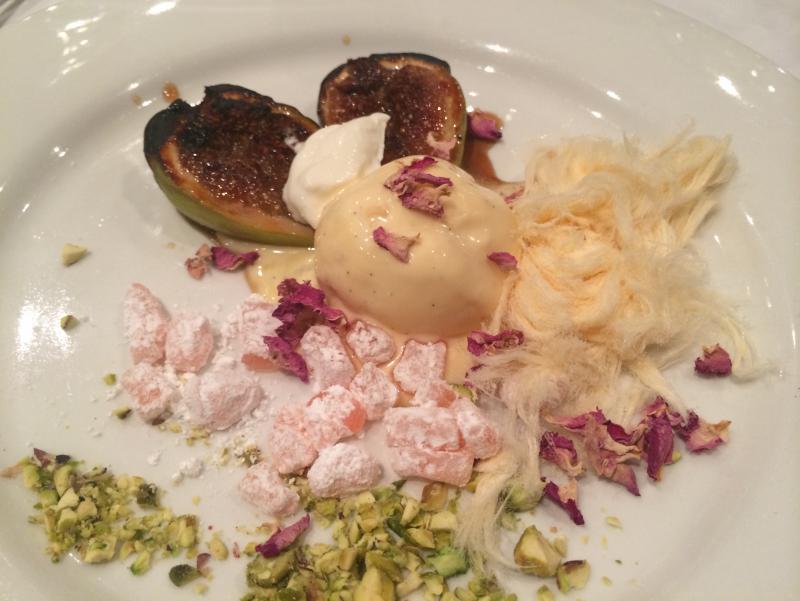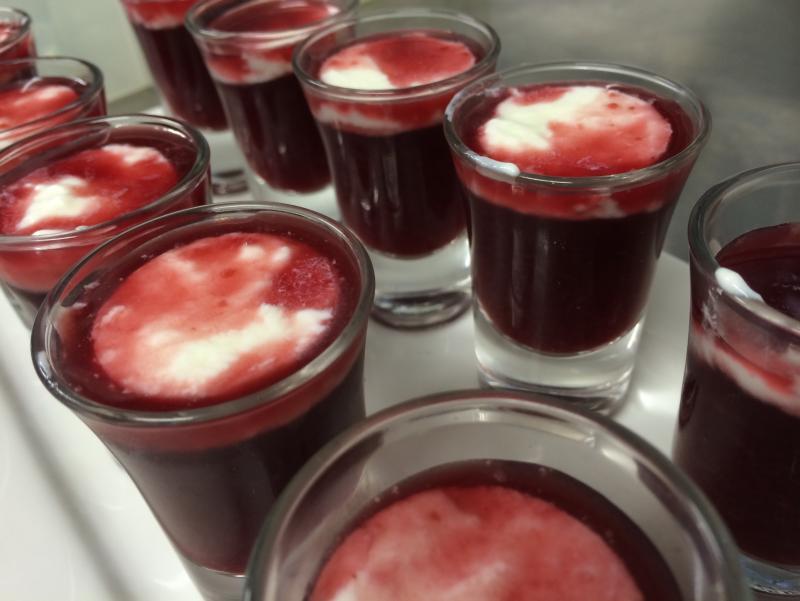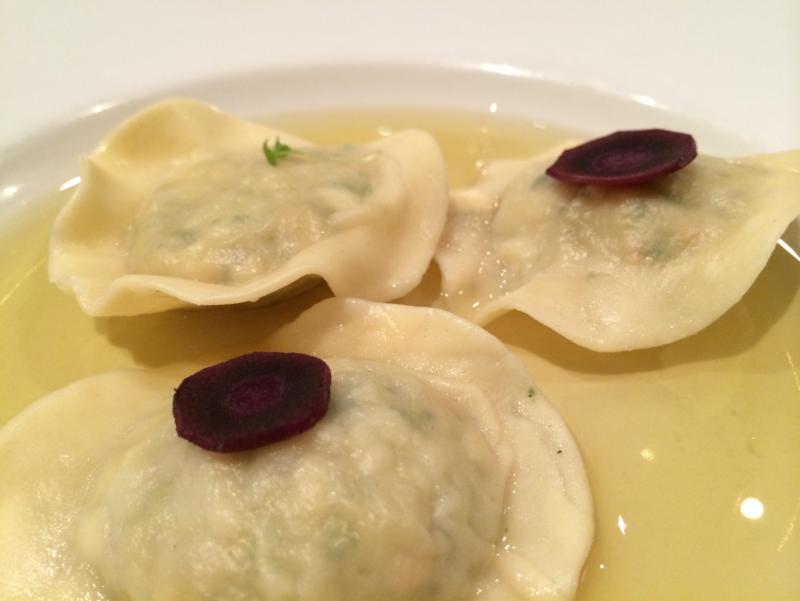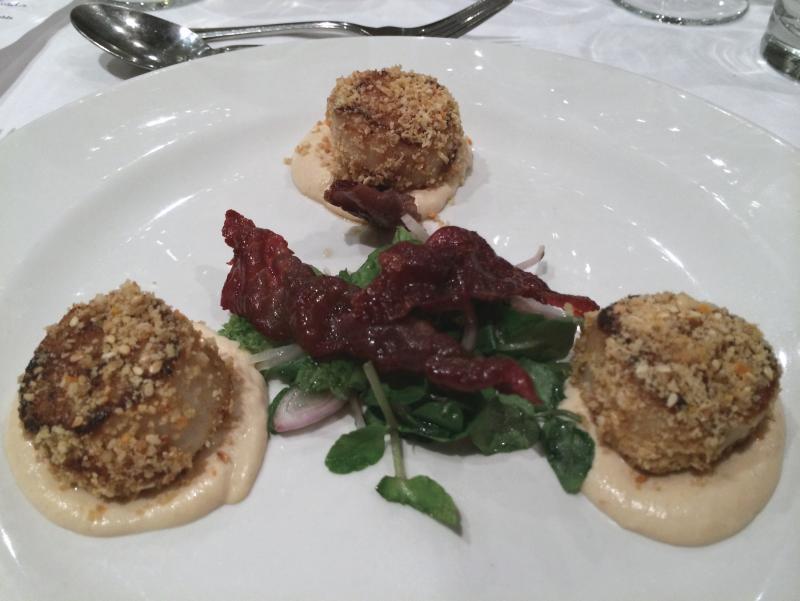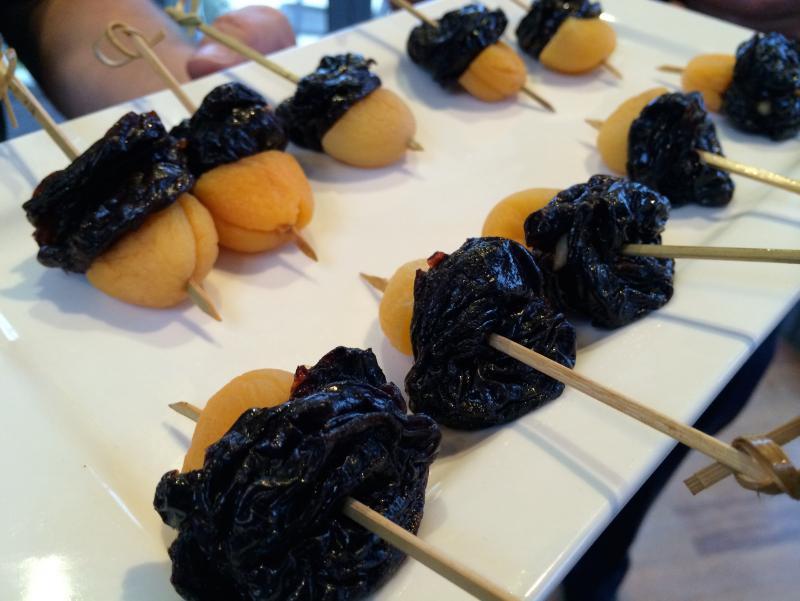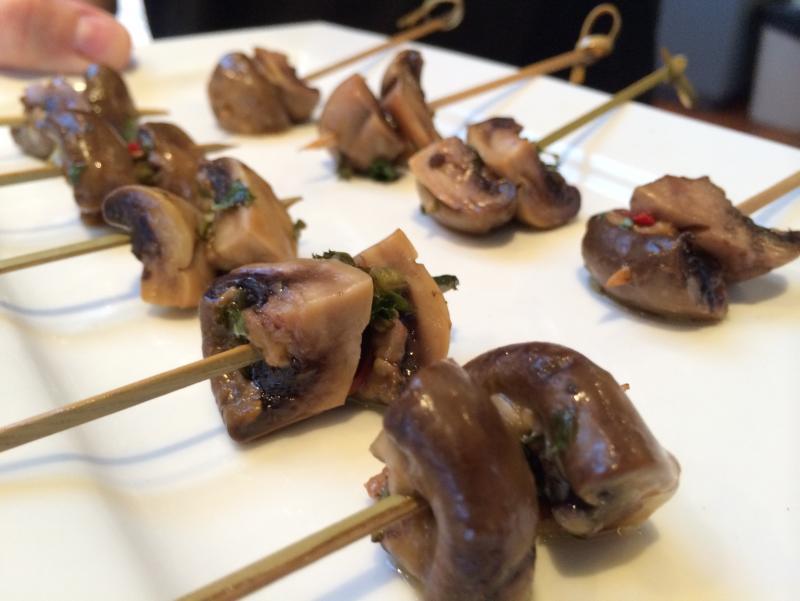-
Posts
2,606 -
Joined
-
Last visited
Content Type
Profiles
Forums
Store
Help Articles
Everything posted by nickrey
-
So have you found something to cook? If not, I'm sure many of us could PM you with suggestions.
-
Check out this post which compared smoke first sous vide later with the opposite order.
-
I thought you were meant to drink it, not sniff the bubbles.
-
To my mind one of the major barriers to wider adoption of sous vide cooking has been the lack of a decent introductory cookbook. This leaves many people who look at the device and just don't know where to start, as is the case with the OP. I'd recommend starting off by looking at recipes and instructional videos on the chefsteps website. They even have a free class which is an introduction to sous vide cooking. Work through the class and you're well on the way to using your circulator.
-
The silence around this topic probably says it all. I'm sure we've all experimented with sous vide vegetables. And yes, the carrots do taste more carroty but if you think about it, 85C is getting up there in terms of temperature so other methods are possibly more preferable. I agree with jayt90. If you want to stop goodness from leaching out, try sealing in ziplock and cooking at a low simmer; or, conversely, try the microwave -- another "modernist" instrument that locks in he goodness. Otherwise, cook them in a way that doesn't leach the goodness; ie. anything else than boiling.
-
I use the outside of my right thumb as a guide so I don't cut myself with the knife. I'm not sure that I'd like to subject the side of my hand to a rasp. Seems much more arty and ornamental than practical.
-
The Morimoto site looks (and sounds) like the opening credits of a 1960s movie. Perhaps it's intentional? This link is to one of the top Sydney restaurants Sepia. It is clear, informative and intuitive on a desktop, laptop or tablet, but could be better for smartphone users. This latter group is growing so fast that much of e-space has yet to catch up with them. Most of the other websites quoted look like the developer trying to show how clever they are and achieving an absolute fail in terms of aesthetics, design, and usability.
-
As I read it, the talk above was about Chardonnay. I'm not sure what you mean by the leading bubbly. Up until the middle of last century all Champagne houses used oak barrels in the traditional method of using champagne. But these were typically very large barrels reused many times, which means very little oak character in the resultant wine. The base wine used to make Champagne can come from many sources and some houses when making their premium Champagnes use a proportion of wine that has been fermented in oak. This is normally used to give a toasty element to the wine. Wine used to make champagne is typically high in acid and low in alcohol, which is the kind of wine made in areas such as Champagne in which the climate makes it difficult to fully ripen grapes. Malolactic fermentation, if used to settle the acidity of the wine, would be done during this stage. It is then given a dose of sugar and yeast to create a second fermentation, which is where the bubbles are formed. The Champagne has a crown seal applied (like a beer bottle) and it is then stored in an angled position so that the sediment thrown during the fermentation process settles down into the neck of the bottle. The bottles are riddled (shaken slightly and turned) to ensure that the sediments settles well. The sediment is called lees. Leaving it on the lees, which is in essence dead yeast gives a bready character to the wine (often described as yeasty, ready, or brioche like). Each bottle is then lowered into a freezing bath to freeze the lees. Then the wine is disgorged by removing the crown seal (the carbon dioxide pressure in the bottle forces the frozen lees out). A dose of wine or sweetened wine is then added to give the Champagne its character. The transfer method processes used to make sparkling wine sees the base wine undergoing a secondary fermentation in bottles without being riddled. The bottles are then emptied it into a tank under pressure where it is filtered, dosed and then rebottled. This method is cheaper than the traditional method because it doesn't involve the manual process of riddling. The tank method does all the secondary fermentation in the stainless steel tank and proceeds as for the transfer method. Sekt and Prosecco are examples of this style of sparkling wine. It is also used to produce other cheap sparkling wines elsewhere in the world. Sweet sparkling wine does the ferment in a sealed pressured tank and interrupts fermentation by chilling the wine. The resultant sweet, low alcohol wine is fizzy. Examples include Moscato d'Asti. Champagne is a high acid wine that takes a toll on the teeth of tasters. My reading of this is that to achieve an acidic sparkling wine that is complex rather than simple, you'd probably need to mix a few wines together to use in making Methode Rotuts wine. It is interesting to see Muscadet being used as often this is kept on the lees to give the wine a more complex character. If I were trying to make this, I'd probably used an unoaked Chardonnay, some of the Muscadet sur lie, another very highly acidic white wine (Chablis or Petit Chablis), and a small proportion of an oaky Chardonnay.
-
I missed this when it was first posted. The creamy flavour/texture in chardonnay is created by Malo-Lactic fermentation. This changes malic acid (think green apple acid) to lactic acid (milk) which is rounder, less sharp and, well, creamy/milky tasting. The butter flavour in Chardonnay comes from an aroma compound called diacetyl which has an intensely buttery flavour and comes from oak maturation. It is used as a flavouring in butter popcorn, butterscotch, etc as well as occurring in beer and, of course, oaked wine.
-
At sea level air pressure is 14.7psi. At 2000ft, it's 11.54psi. It also explains why the boiling point of water at the top of a mountain is less than 100C. To carry this latter point to its obvious conclusion, room temperature water in my chamber vacuum sealer will boil. Were I to have a pressure cooker in this vacuum chamber with room temperature water, it would seal at room temperature, not at 250F. Atmospheric pressure is likely to be whole story on this one.
-
"you buy this thinking you will get recipes ? best of luck" Sorry, must have misunderstood this. Seemed clear to me.
-
temper chocolate?
-
On the other hand there are those of us who understand cooking perfectly and integrate these devices into our everyday cooking easily. As did those people who bought those new fangled ranges when they came out instead of being happy with the metal bits on their stove heated by the burning wood below: untalented mob the lot of them. Rotuts, the app comes with many recipes. I'm not sure where you get your information from. I also have a Thermomix, which is a very expensive piece of food processing technology. They have just incorporated recipes into the machine that tell you how much of what ingredient to add and will set the temperature (yes it cooks), time and type of stirring. Like most more experienced cooks (and many many chefs use these), I tend to control it manually to get the effect that I want. Think about the people who use a manual setting on a camera versus the automatic. And, yes I still stir my risotto by hand because that gives a better outcome. I seem to remember conversations like this when sous vide first came into the mainstream. As for this, I was an early adopter -- as were many chefs who now just consider it to be a normal part of cooking. I think even some of the early cynics are coming around. Like many new innovations, you won't know how you'll use it unless you try it and explore what it can do. As those who are scientifically minded know, evaporation occurs when you are simmering. As a consequence, the thermal mass changes. Thus maintaining a set temperature is a continual iterative process. If you want to waste time on continual adjustments it's your choice. I'd rather free myself up for some more creative pursuits in my cooking.
-
How do you handle it currently?
-
Simmer at moderate heat? Cook at a low simmer for 20 minutes? What does this mean? Ever dreamt of a way of controlling your hot plate to perfect temperature? Look no further. Simply put the temperature probe into your pot and let the controller do the rest with your existing kitchen range. Think sous vide without buying the expensive circulator. Perfect poached eggs. Slow cooking without the fuss. Use chef-created recipes to control your own range with precision. Thanks to eGullet member Vengroff and his team for this new innovation. You may know him from Sous Vide Dash. I have no proprietal interest in the technology but am one of the first backers. Check out the new kickstarter for Meld. The first 250 backers get the $149 product for $99. Other backers get it for $129.
-
It would increase the time from inflation to bursting, which gives more time to stop the microwave. Depends on what problem you are looking to solve.
-
To my mind gentle is best. I wouldn't press the stock nor would I pour it, preferring instead to use a ladle to get the clear stock from amongst the bones. If you use the slow release method, you'll wind up with a clear stock.
-
In an attempt to not reinvent the wheel, have you tried the sous vide index before posting this question?
-
Very interesting experiment, thank you for sharing it with us.
-
Cooking under pressure increases the boiling point of water. Thus pressure cookers can be used to take food to higher temperatures without the destructive effects of boiling acting on the meat. This allows the meat to be cooked in a gentle environment but at higher temperatures which maximise extraction: the best of both worlds. I think some tests are definitely needed to ensure that the Japanese opinions are not just driven by tradition.
-
Middle Eastern Dinner for 15. I did the manti, scallops and ocean trout. Marinated chilli button mushrooms Warm prunes with apricots stuffed with nuts and raisins Chilled black cherry, apple, and yoghurt soup Seafood Manti (Turkish Ravioli) in a crab and saffron broth Seared Scallops with Almond crumbs, hummus and crisp Armenian air-dried beef (bastourma) Ocean Trout grilled with fennel, lime and sumac served with a fennel and herb salad Honey caramelised figs with Mascarpone, Rosewater Ice-cream, Turkish delight, Persian Fairy Floss, and Pistachios
- 589 replies
-
- 13
-

-
If it helps, try to use the method that best peels boiled quails eggs. Crack the whole egg gently and start from the large end first. If you start from the middle or the smaller end, bye bye quail's egg.
-
Salt+lemon will modify the meat, as it does in any marinade/dry rub. The acid in the lemon will "cook" the meat: this is the concept behind ceviche. The salt will brine the meat, which is not such a bad thing unless you use too much salt: the salt and liquid in the fish equilibrate to a set level, which is the concept used to cure meats (eg. bacon).
-
And then you sear the meat to keep the juices in. Funny, I've always thought that Blumenthal tested these things to see what was fact and what was fiction. I'd like to see an experiment with blind tasting to see if there is a difference. At this stage it seems a bit like and old wive's kitchen tale to me. He also recommends this for sliced garlic in some recipes (four times with fresh milk each time).
-
Salt is very important in cooking and when it is added to give a desired result. For example,brining or adding salt up front to ensure distribution through the food. It doesn't really matter where the salt comes from. Unsalted butter + salt = same as salted butter but with more control. Why use anything but unsalted butter and add salt to taste while cooking? One conventional wisdom that is never disputed is that it is easier to add salt to taste than to take it out (actually the latter is close to impossible, you have to add more unsalted ingredients to balance the dish). My own butter is made with 1% salt as I like this concentration for buttering bread, etc -- I also use Maldon sea salt as the bigger grains give an illusion of more salt than I actually use.



